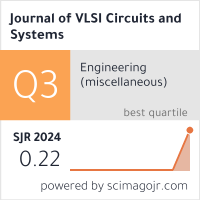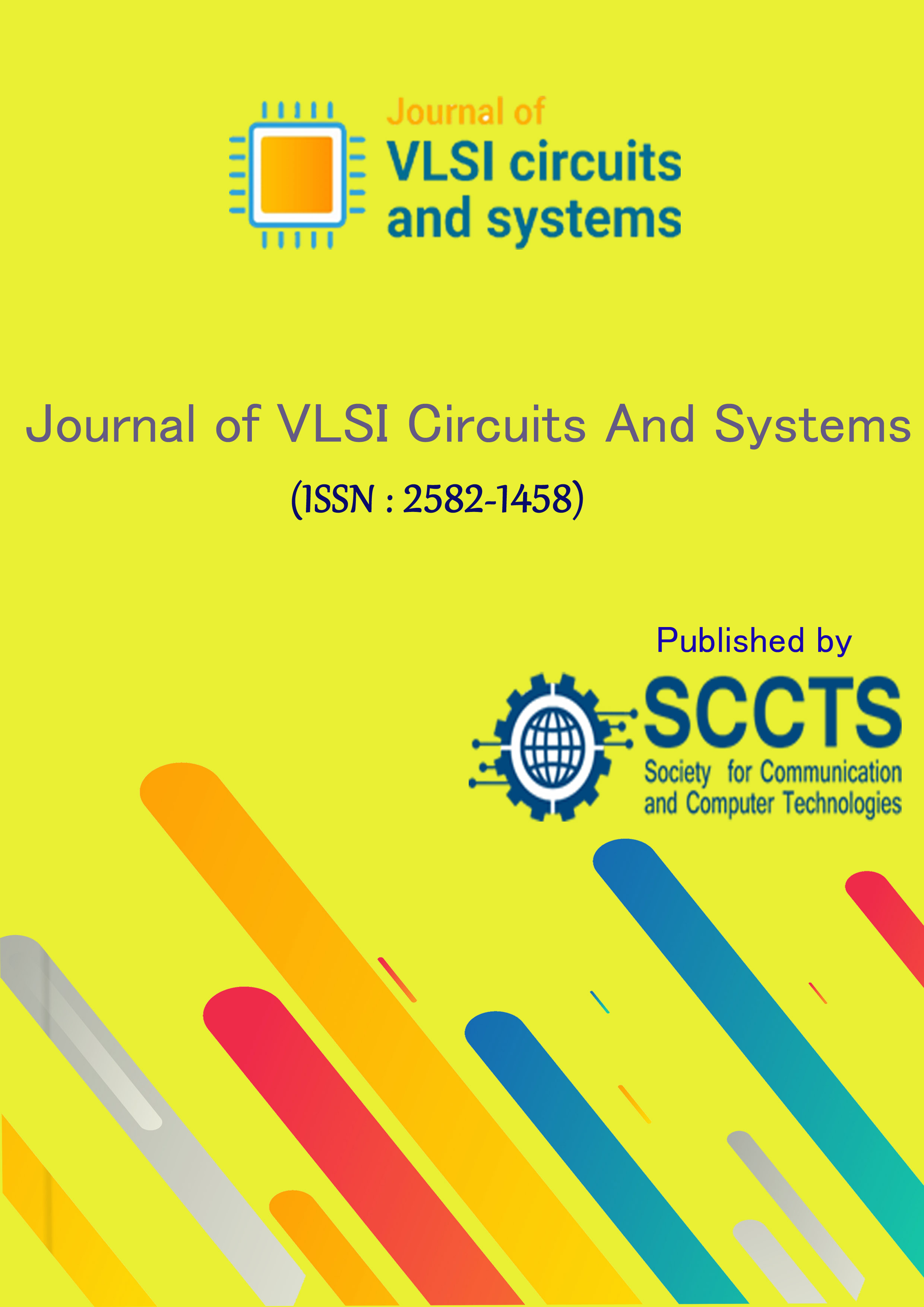Fundamental Data Seperator using Threshold Logic at Low-Supply Voltages
DOI:
https://doi.org/10.31838/jvcs/04.02.05Keywords:
CMOS; Delay; FinFET; HVT; LVT; Power..Abstract
In digital terminology, a device that compares two numbers which are represented in binary format and determines whether one of the two inputs are lesser than or equal to or greater than the other input is called a comparator. Comparators are generally used in Central Processing units (CPUs) and microcontrollers. In this project, a 2-bit magnitude comparator is designed with 18nm FinFET technology. FinFET technology is used to overcome the drawbacks associated with CMOS technology like channel length, power consumption, delay and area of transistors, etc. The proposing magnitude comparator is compared with the existing CMOS comparator in terms of power and delay. Schematic circuit diagrams of greater than, equal to and lesser than circuits have been simulated using the Cadence Virtuoso tool. Power and delay values are calculated and plotted for different values of supply voltage ranging from 0.1v-1.0v. LVT (Low Voltage) and HVT (High Voltage) analysis are performed separately. FinFET comparators can be used where a fast switching rate is required, to improve the efficiency of control devices and to make devices compact.











